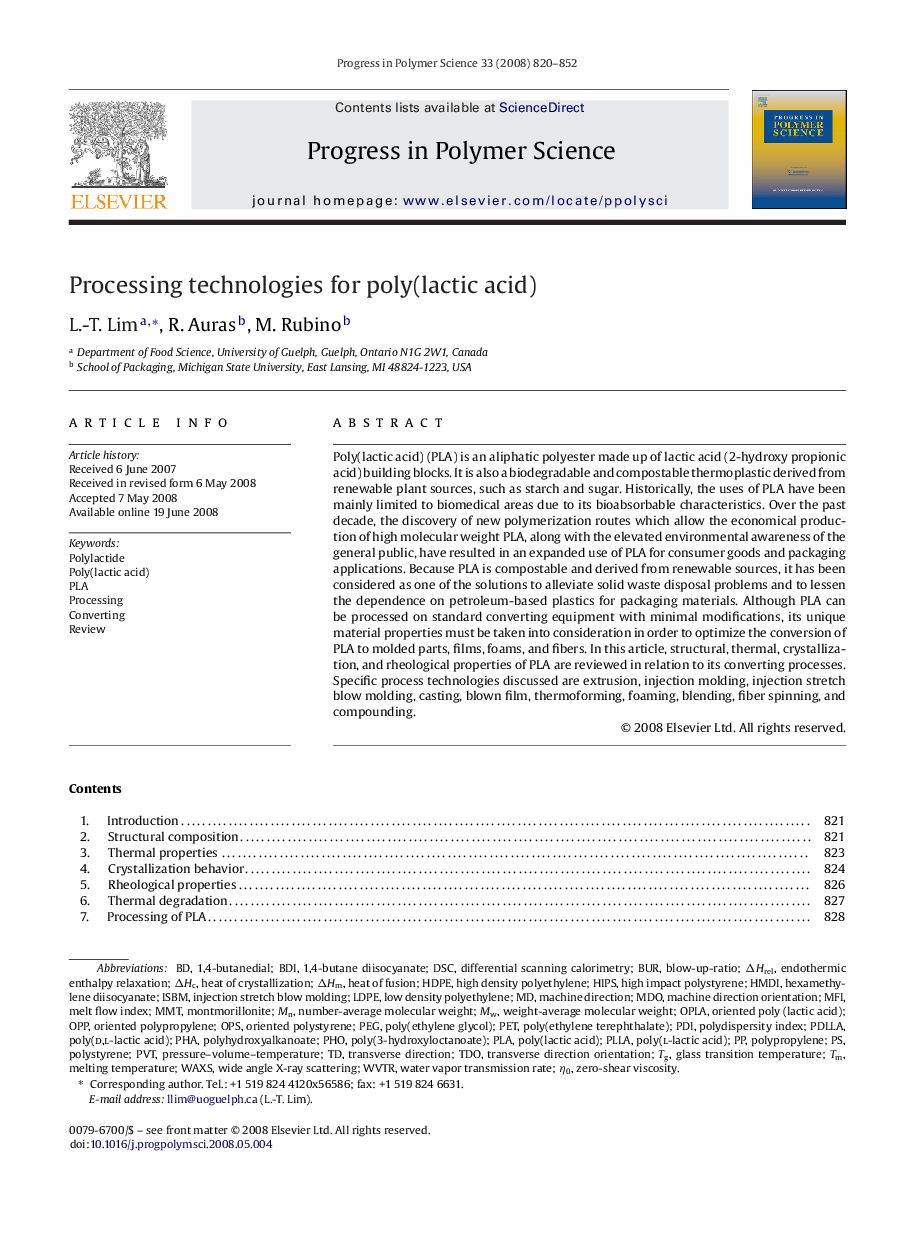| Article ID | Journal | Published Year | Pages | File Type |
|---|---|---|---|---|
| 5208680 | Progress in Polymer Science | 2008 | 33 Pages |
Abstract
Poly(lactic acid) (PLA) is an aliphatic polyester made up of lactic acid (2-hydroxy propionic acid) building blocks. It is also a biodegradable and compostable thermoplastic derived from renewable plant sources, such as starch and sugar. Historically, the uses of PLA have been mainly limited to biomedical areas due to its bioabsorbable characteristics. Over the past decade, the discovery of new polymerization routes which allow the economical production of high molecular weight PLA, along with the elevated environmental awareness of the general public, have resulted in an expanded use of PLA for consumer goods and packaging applications. Because PLA is compostable and derived from renewable sources, it has been considered as one of the solutions to alleviate solid waste disposal problems and to lessen the dependence on petroleum-based plastics for packaging materials. Although PLA can be processed on standard converting equipment with minimal modifications, its unique material properties must be taken into consideration in order to optimize the conversion of PLA to molded parts, films, foams, and fibers. In this article, structural, thermal, crystallization, and rheological properties of PLA are reviewed in relation to its converting processes. Specific process technologies discussed are extrusion, injection molding, injection stretch blow molding, casting, blown film, thermoforming, foaming, blending, fiber spinning, and compounding.
Keywords
WAXSPHAPLALDPEBDIMMTTDOPLLAMDOPDLLAPDIHIPSWVTRHMDIhexamethylene diisocyanateburISBMΔHmOriented polypropyleneΔHcPolylactideHDPEPVTMFIDSCOPsOPPwide angle X-ray scatteringTransverse directionProcessingglass transition temperatureMelting TemperatureMelt flow indexpolydispersity indexpressure–volume–temperaturephoReviewMontmorilloniteWater vapor transmission rateweight-average molecular weightnumber-average molecular weightZero-shear viscosityPETpoly(d,l-lactic acid)Poly(L-lactic acid)Poly(lactic acid)Poly(ethylene terephthalate)High density polyethyleneLow density polyethylenePoly(ethylene glycol)High impact polystyrenepolyhydroxyalkanoatePolypropylenePEGPolystyreneDifferential scanning calorimetryHeat of fusion
Related Topics
Physical Sciences and Engineering
Chemistry
Organic Chemistry
Authors
L.-T. Lim, R. Auras, M. Rubino,
